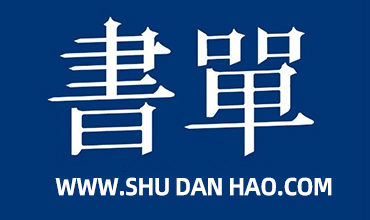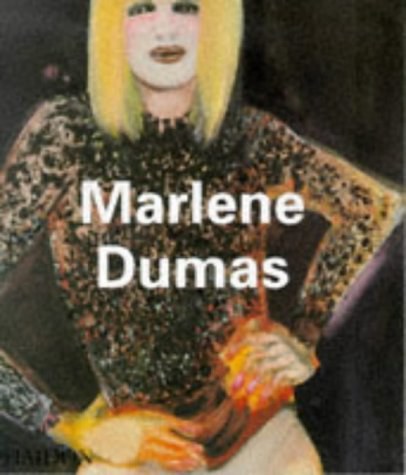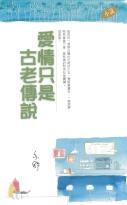
Mike Kuniavsky《Smart Things》
书刊介绍
内容简介
Key Features
Tackles design of products in the post-Web world where computers no longer have to be monolithic, expensive general-purpose devices
Features broad frameworks and processes, practical advice to help approach specifics, and techniques for the unique design challenges
Presents case studies that describe, in detail, how others have solved problems, managed trade-offs, and met successes
Description
The world of smart shoes, appliances, and phones is already here, but the practice of user experience (UX) design for ubiquitous computing is still relatively new. Design companies like IDEO and frogdesign are regularly asked to design products that unify software interaction, device design and service design -- which are all the key components of ubiquitous computing UX -- and practicing designers need a way to tackle practical challenges of design. Theory is not enough for them -- luckily the industry is now mature enough to have tried and tested best practices and case studies from the field.
Smart Things presents a problem-solving approach to addressing designers' needs and concentrates on process, rather than technological detail, to keep from being quickly outdated. It pays close attention to the capabilities and limitations of the medium in question and discusses the tradeoffs and challenges of design in a commercial environment. Divided into two sections ? frameworks and techniques ? the book discusses broad design methods and case studies that reflect key aspects of these approaches. The book then presents a set of techniques highly valuable to a practicing designer. It is intentionally not a comprehensive tutorial of user-centered design'as that is covered in many other books'but it is a handful of techniques useful when designing ubiquitous computing user experiences.
In shot, Smart Things gives its readers both the ";why"; of this kind of design and the ";how,"; in well-defined chunks.
Readership
Primary audiences
Industrial designers. Many people who are primarily industrial designers (at firms such as IDEO, Ziba, Pentagram, Lunar, etc.) are hired based on the perception that the design of anything that any non-software consumer product needs to be designed by industrial designers. Since they get tapped to do work that includes interaction and service design, this book will help them understand what needs to be done (and what skills they can look for in team members).
Software or Web Interaction/Interface designers. The first Web designers came to the medium from traditional graphic design and discovered how different it is, even though it looks like it should be a similar set of skills. Now software and Web designers are discovering the same thing about designing for mobile an ubiquitous products and are looking for resources to help them understand where the differences lie, so they can avoid reinventing the wheel.
Ubiquitous computing designers. Exclusively the concern of corporate and university research labs until recently, the emphasis in ubiquitous computing was primarily on technology, and not on design. However, many people now find themselves designing ubiquitous computing systems (maybe under the heading of entertainment, peripheral or appliance design), and some may even recognize the relationship to ubiquitous computing.
Mobile application designers. There is a growing population of designers created applications for mobile services full-time. Their design challenges regularly intersect with the ideas of ubiquitous computing user experience. Other than informal networks and competitive analysis, there are few sources of information about the design process of interactive products for this medium.
Secondary audiences
Developers working in mobile media. Programmers always end up doing some amount of design (and, too often, all of the design) of the products they're coding for. Programmers are especially comfortable looking in documentation for solutions to their problems. Although this book won't have the kind of "cut and paste" easy solution for them, it'll have guidance for what's worked in the past, which is often as useful.
Project/Product managers. Much like programmers, product managers, whose job requirement is to balance user and company needs, end up being the designers of the services they're shepherding.
Contents
1. Introduction: The Hidden Middle of Moore's Law
People typically read the Moore's Law chart as a trend in the number of transistors. What's implicit in the trend, however, is that it is the product of a conscious decision in the context of a semiconductor marketplace. The prices of new CPUs has stayed roughly the same over the last 25 years, generally between $500 and $1000 at the time of introduction. Thus, another way that to read the chart is that as transistor density increases, the price of older technology proportionally decreases.
This price drop means that ubicomp, first postulated in the late 80s/early 90s has just become a practical reality: the price of a new CPU in 1990 was $1500 in today's dollars, the equivalent amount of processing power can now be purchased for 50 cents. This means that the CPUs that brought us the Web explosion'ones that have the power to operate a multitasking, networked computer'can be put into just about any device at virtually any price point.
PART ONE: Frameworks
2. Broad Concepts
This chapter will introduce the background issues that underlie some of the broad conceptual frameworks
The relationship between industrial, interaction and service design
The importance of context
When designing ubiquitous computing devices, suddenly your frame is no longer the chrome around the browser window, but the world. It's an inversion of traditional computing attitudes, moving out into the world.
The design of social devices
Networking means that devices can communicate with each other, and people can communicate with each other through the devices.
Technology adoption patterns
Each new class of ubiquitous computing devices is essentially a new tool. People react differently to these tools than new pieces of software, which'even if new new'essentially exist in a familiar box. Tool adoption takes a while and follows a familiar pattern. When designing devices in this field, it's valuable to understand whether you're designing something new or extending something existing.
3. Information is a Design Material
Embedded information processing acts like a material and creates new capabilities, and imposes new constraints.
Behavior as competitive advantage
When a designer can include information processing in a product for very little cost, the calculation becomes not one of engineering complexity, that's relatively cheap, but one of competitive advantage. Including a CPU to produce behaviors becomes a line item in the competitive analysis of making an object, just like the calculation about what to make it out of. What you do with that CPU becomes part of the design of the product and needs to be designed with the same attention to the other parts as any of the materials being used.
Toys leading the way
Many new toys depend not just on their physical appearance, but on behavior created by information processing, for their competitive advantage.
Example: Cuddle Chimp
Some qualities of information as a material
Real-time change
Responsive behavior
Can manipulate symbols that have meaning, but not meaning
Requires power, storage
Embodied interaction
The difference between a virtual object and a physical one
4. Information as Material Case Study: the Whirlpool centralpark Refrigerator
The history of the screen fridge
Starting in 1998, one screen fridge introduced every couple of years
All suffered from the same problem: they stuck what amounted to a tablet PC to the front of a fridge, with little understanding as to how people would use it
Very little adoption, since the model didn't fit people's life practices
Whirlpool's third try
The centralpark uses a plugin architecture that allows a variety of different applications to be plugged into it. Each is a self-contained computer, but they're not presented as computers, but as digital picture frames, calendars, etc.
5. Information Shadows
Nearly everything manufactured today exists simultaneously in the physical world and in the world of data.
A digital representation is the object's information shadow.
Information shadow can be examined and manipulated without having to touch the physical object.
Coates' ";Age of Point-At-Things";
Examples:
Amazon ASINs
Mutanen's Thinglink
YottaMark/CertiLogo
Sterling's wine bottle
RFIDs and fiducials
These are the hooks that connect the everyday object to its digital representation
Once hooked, they can be mashed up
6. Information Shadows Case Study: Disney Clickables Princess Charm Bracelets
Description
"; When a girl touches her band to her friend's and presses a button, her band will glow to confirm that a Fairy Friendship has been made [in the online community Disney has set up for the purpose].";
A short history of smart bracelets
Design of a physical/virtual social network
7. Devices are Service Avatars
Networking brings dematerialization
The same information can be accessed and manipulated through a variety of devices.
Value shifts to the information, rather than the device that's communicating it.
Devices become secondary, they become temporary representations of information-based services.
Devices become projections of services
A number of familiar appliances--cell phones, ATMs--are worthless without the networks they're attached to. They are physical manifestations, avatars, projections into physical space of services, but are not services themselves. You really start to see this in purely information entities: what's a plane ticket? what's money? what's a book? They become subscriptions and agreements, for which a device becomes a nearly disposable channel.
Service design
When designing user experiences for ubiquitous computing, the design of the service becomes as important as the design of the device. The iPod is an avatar of the iTunes Music Store. The Amazon Kindle, as questionably designed as it is, is a physical manifestation of the Amazon Kindle Store.
Objects become subscriptions
Right now most of these services are information or media related, but that's changing.
Example: City CarShare
8. Service Avatar Case Study: the iPod
Description
The MP3 player in 2001
The iPod as an iTunes avatar
The iPhone
Design process
9. Applianceness
Defining applianceness
When computation is cheap, we no longer have to make general-purpose computers
相关推荐
-

社会主义核心价值观融入大学生思想政治教育的创新机制研究
《社会主义核心价值观融入大学生思想政治教育的创新机制研究》内容简介:本书着眼于社会主义核心价值观和大学生思想政治教育的融合
-

郭晓刚《JavaScript捷径教程》
《JavaScript捷径教程》讲述了JavaScript以及DOM的应用。重点讲解了JavaScript库,并通过实际的示例说明了如何把这些库应用于你的
-

《Designing with Progressive Enhancement》书籍《Designing with Progressive Enhancement》
Progressiveenhancementisanapproachtowebdevelopmentthataimstodeliverthebestpossib...
-

亚细亚生产方式与东方社会发展道路
《亚细亚生产方式与东方社会发展道路》内容简介:对马克思的亚细亚生产方式的讨论和争论,不仅关系到对这一理论本身的评价和东方社
-

CCNP实战指南:远程接入:远程接入
CCNP实战指南:远程接入 本书特色 本书适用于想要通过CCNP远程接入书面考试的网络技术人员,以及那些希望获得实际经验以轻松应付日常工作的人。由于本书既包括了...
-

会声会影视频编辑高手秘笈158招-X5版-(附赠多媒体光盘1张)
会声会影视频编辑高手秘笈158招-X5版-(附赠多媒体光盘1张) 本书特色 博智书苑主编的《会声会影视频编辑高手秘笈158招(附光盘X5版)》通过158个精彩的...
-
![[美] 古德利弗《编程匠艺》](http://oss.shudanhao.com/caiji/chazidian/2023/3887.jpg)
[美] 古德利弗《编程匠艺》
如果你可以编写出合格的代码,但是想更进一步、创作出组织良好而且易于理解的代码,并希望成为一名真正的编程专家或提高现有的职
-

道格拉斯·克罗克福德《JavaScript语言精粹》
JavaScript曾是“世界上最被误解的语言”,因为它担负太多的特性,包括糟糕的交互和失败的设计,但随着Ajax的到来,JavaScript“
-

老兵新传Visual Basic核心编程及通用模块开发
老兵新传Visual Basic核心编程及通用模块开发 本书特色 编程“高手”的功力体现在对语言的彻底掌握和丰富的实践经验书稿内容由作者原创编写,直接面向实际应...
-

余涛《Kinect应用开发实战》
本书由微软资深企业架构师兼Kinect应用开发专家亲自执笔,既系统全面地讲解了Kinect技术的工作原理,又细致深入地讲解了Kinect交
-

我也有过小时候
《我也有过小时候》内容简介:在中国,任溶溶先生是一个无论大人还是孩子都喜欢的作者,他的许多作品包括译作滋养了几代人,任老先
-

Vladimir Vapnik《The Nature of Statistical Learning Theory》
Theaimofthisbookistodiscussthefundamentalideaswhichliebehindthestatisticaltheory...
-

出发:我在法院当法警
《出发:我在法院当法警》内容简介:本书全面梳理了上海市司法警察队伍历年来的发展足迹,结合电台访谈节目的内容,整理编写而成。
-

HTML5权威指南
HTML5权威指南 本书特色 《html5权威指南》是系统学习网页设计的权威参考图书。《html5权威指南》分为五部分:**部分介绍学习本书的预备知识和html...
-

区块链核心算法解析
《区块链核心算法解析》内容简介:《区块链核心算法解析》介绍了构建容错的分布式系统所需的基础技术,以及一系列允许容错的协议和
-

论文排版实用教程-Word与LaTeX
论文排版实用教程-Word与LaTeX 本书特色 本书按照论文写作编排的顺序,先后以word、latex两种软件为例分别介绍论文的编排方法。第1章主要介绍有关论...
-

理念·制度·人
《理念·制度·人》内容简介:20多年超近距离观察华为与任正非,8年研究积淀解析华为快速崛起的底层逻辑。在本书中,华为公司顾问田
-

“文学”概念史
《“文学”概念史》内容简介:“文学”是什么?自19世纪初近代意义的“文学”在西方兴起,中外学术界就不断有学者对这些问题给出自
-

经典剪发专业技术图解:短发(视频教学版)
《经典剪发专业技术图解:短发(视频教学版)》内容简介:《经典剪发专业技术图解:短发》是专门针对段发剪发技术的详细图解教程,
-

读得懂的医学:消化的秘密
《读得懂的医学:消化的秘密》内容简介:本书由资深胃肠外科专科医生为大家普及一些常见的消化系统知识,通过真实的事例带您了解消





